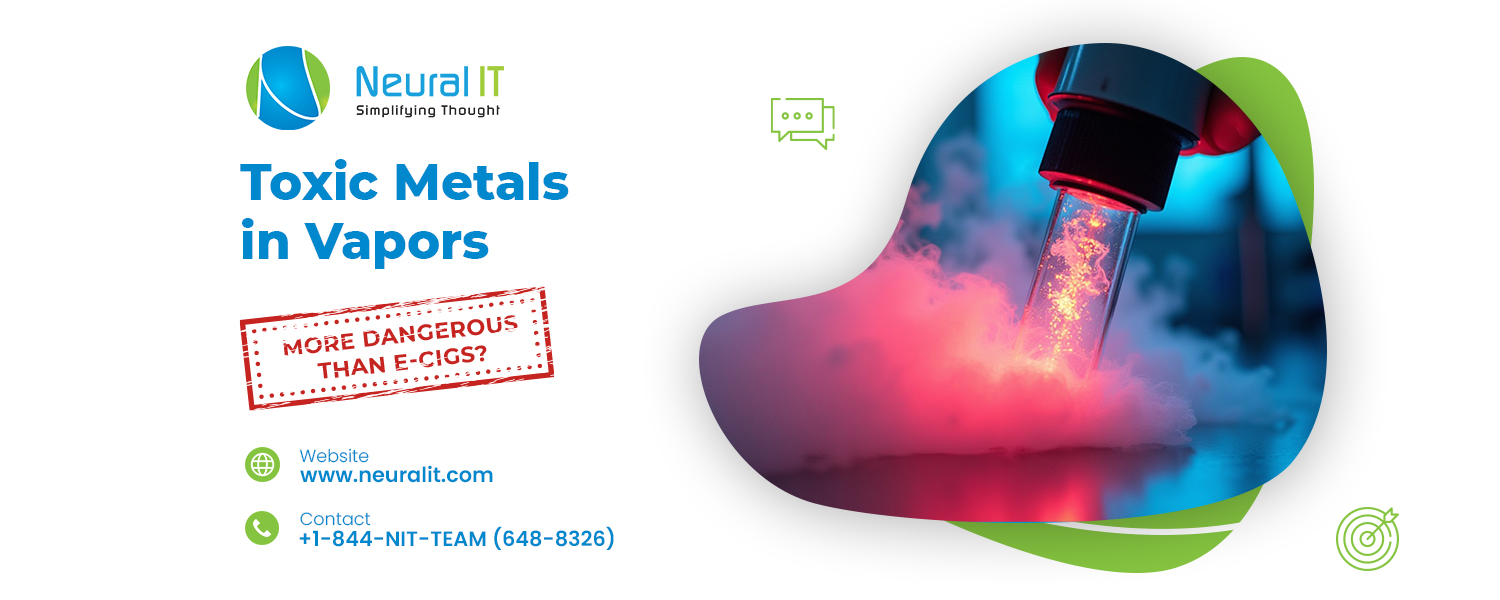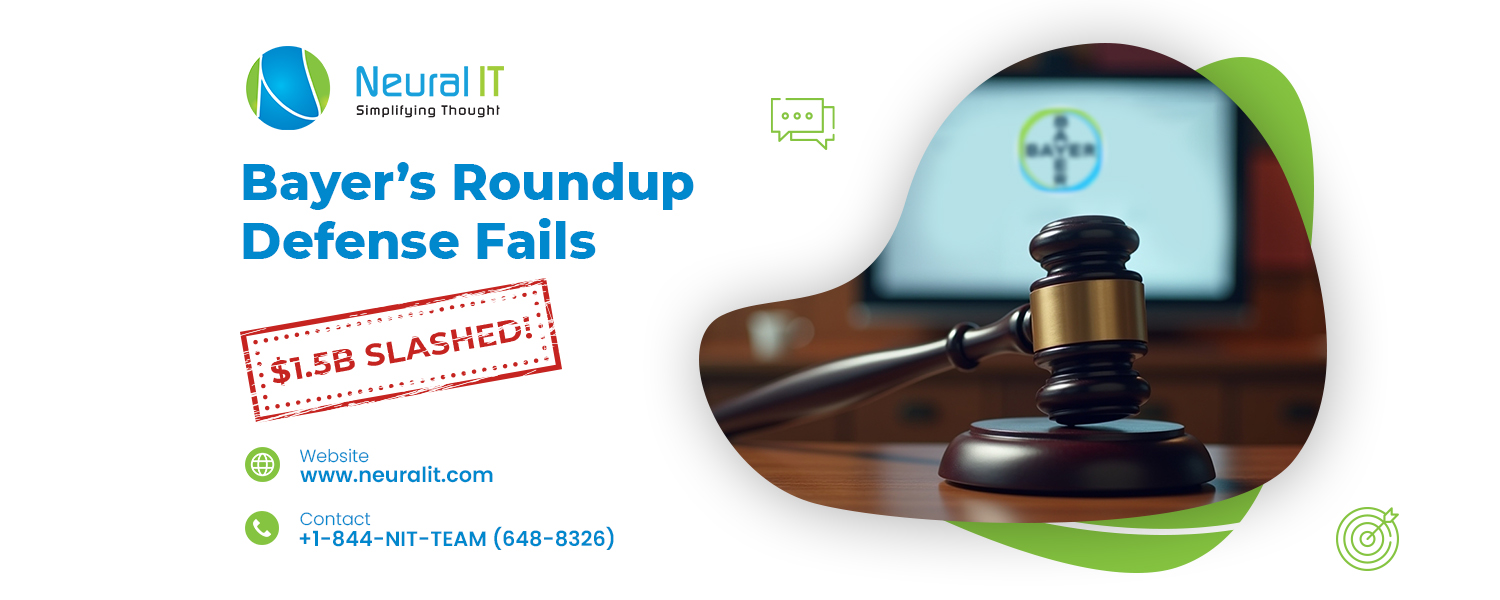Weekly Mass Torts Bulletin 2025-June-16
Study Finds Toxic Metals in E-Cigs and U-Cigs Vapors

As health concerns about e-cigarette use escalate, emerging research suggests that a newer class of vaping products—ultrasonic cigarettes or u-cigarettes—may pose even greater risks.
A study published in Environmental Health Perspectives in April highlights that some u-cigarette vapors contain significantly elevated levels of harmful heavy metals such as arsenic and selenium.
What Sets U-Cigarettes Apart
Both e-cigarettes and u-cigarettes are marketed as alternatives to traditional smoking, delivering nicotine through inhaled vapor. However, they differ in technology: e-cigarettes use heating coils to vaporize the liquid, while u-cigarettes rely on high-frequency ultrasonic vibrations. Some proponents argue that the lack of heat in u-cigarettes could make them safer, but recent evidence challenges that assumption.
Toxic Heavy Metals Found in Vapors
Exposure to heavy metals like arsenic and selenium has long been associated with serious health issues, including neurological disorders and multiple forms of cancer. Similar concerns have fueled lawsuits over children ingesting heavy metals in food. The new study from the University of California, Riverside, analyzed u-cigarettes, e-cigarettes, and other pod-style vaporizers for toxic element content.
Comprehensive Chemical Analysis
Researchers used advanced techniques, including a scanning electron microscope and energy-dispersive X-ray spectrometry, to evaluate chemical and metal levels in various devices. Brands tested included SURGE (a popular u-cigarette), JUUL (a well-known e-cigarette), and others. Sixteen different elements were identified in at least one sample, whether in liquid or aerosol form.
U-Cigarettes Show Higher Contamination
Overall, u-cigarettes—especially the SURGE brand—contained more elements and at higher concentrations than newer, fourth-generation e-cigarettes. The presence of certain elements even increased in the liquid after vaping. For instance, silicon was consistently found in both fluids and aerosols across all tested brands.
Nickel, another toxic element, was detected in every fluid sample. The KWIT Stick brand showed the highest concentration, reaching up to 66,050 micrograms per milliliter. However, nickel's transfer from fluid to aerosol was relatively inefficient.
SURGE Products Raise Red Flags
Unique to SURGE fluids were elevated levels of copper and zinc—elements minimally present in their aerosols. Of greater concern was the presence of arsenic and selenium at higher levels in SURGE products. Both elements are included in the FDA's list of “harmful and potentially harmful constituents.” Researchers suspect these metals may stem from substandard manufacturing solvents or the heating components used in ultrasonic devices.
Health Risks and Expert Warnings
“This is the first study to our knowledge showing that u-cigarettes can contain equal or higher concentrations of metals compared to traditional e-cigarettes,” said the study’s lead researcher. The data suggests that long-term use of u-cigarettes may result in heightened health risks, including cancer and neurotoxicity.
Regulatory Action and Declining Teen Use
Vaping, especially among teens, continues to be a major public health concern in the U.S. In a move applauded by health advocates, the U.S. Supreme Court recently upheld federal restrictions on flavored vaping products.
According to research, these regulations have already led to a 3.6% decline in daily vaping among young adults.
Meanwhile, agencies like the FDA and CDC remain focused on tightening regulations. Their efforts appear to be yielding results: teen vaping rates dropped to a decade-low in late 2023, according to the CDC.
Appeals Court Upholds $611M Roundup Verdict

A Missouri appeals court has upheld a massive Roundup verdict originally totaling $1.5 billion, but significantly reduced the final amount Bayer and its Monsanto unit must pay to $611 million.
The case involved three plaintiffs from New York, Missouri, and California, who each developed non-Hodgkin’s lymphoma after long-term exposure to the herbicide.
Original $1.5 Billion Verdict in 2023
The original verdict was issued in November 2023, when a Missouri jury found that Monsanto failed to warn consumers about the cancer risks linked to Roundup. The jury awarded $61.1 million in compensatory damages, along with $1.5 billion in punitive damages—$500 million for each plaintiff—designed to punish Monsanto and deter similar corporate misconduct.
Roundup Litigation Background
This verdict is part of a broader wave of litigation Bayer has faced since acquiring Monsanto, with over 120,000 lawsuits filed nationwide involving Roundup exposure. Most cases allege that users developed non-Hodgkin’s lymphoma due to glyphosate, the herbicide’s active ingredient. Although Bayer has reached more than $10 billion in settlements to resolve many of these cases, thousands remain unresolved or are being newly filed.
Appeal and Court Ruling
Monsanto appealed the Missouri decision to the Missouri Court of Appeals for the Western District, raising several legal challenges, including federal preemption and objections to trial testimony and evidence. However, in an opinion issued on May 27, the court rejected Monsanto’s arguments and upheld the verdict. The judges did reduce the punitive damages to $549.9 million, but left compensatory damages untouched, bringing the final payout to $611 million.
Legal Strategy and Future Challenges
This latest courtroom loss adds to Bayer's long string of legal setbacks involving Roundup. As a result, the company has shifted part of its focus toward gaining legal immunity through legislation and potential rulings from higher courts. Bayer has already helped pass liability shield laws in Georgia and North Carolina and is lobbying for similar measures in other states.
Possible Bankruptcy Option on the Table
There are reports that Bayer may consider using the bankruptcy system to limit Monsanto’s liability, despite having ample resources to handle litigation. Although this strategy remains unconfirmed, it would mirror tactics used by other corporations facing mass tort liabilities.
Supreme Court Appeal and Reformulation Efforts
In a move viewed by many legal analysts as a last-ditch effort, Bayer recently filed a Writ of Certiorari with the U.S. Supreme Court. The petition argues that the Roundup lawsuits should be barred under federal preemption, as the product was approved by federal regulators. This marks Bayer’s third attempt to involve the Supreme Court, following the Missouri Supreme Court’s February decision to uphold a $1.25 million verdict from a separate Roundup trial.
To mitigate future risks, Bayer announced plans in 2021 to reformulate Roundup, removing glyphosate from consumer versions of the weed killer. However, this change will not affect existing claims, and without further settlements, the company is likely to face ongoing litigation for years as more former users are diagnosed with cancer linked to earlier Roundup formulations.
Valsartan “Wave 2” Bellwether Trial Schedule Set by Court

As the first Valsartan bellwether trial approaches in September 2025, the federal judge overseeing the multidistrict litigation (MDL) is preparing a second set of trials.
This move comes in anticipation of the possibility that parties may not reach a global settlement following the initial trial. The new “Wave 2” trials will include four additional lawsuits selected to proceed if no resolution is achieved.
Background of the Valsartan Litigation
More than 1,300 product liability lawsuits have been filed in federal courts nationwide following widespread recalls of Valsartan in 2018. These recalls were issued by various generic drug manufacturers after it was discovered that some versions of the blood pressure medication were contaminated with carcinogenic substances, including N-nitrosodimethylamine (NDMA) and N-nitrosodiethylamine (NDEA).
Common Allegations Across Cases
Each of the lawsuits presents similar claims, asserting that prolonged use of contaminated Valsartan caused individuals to develop various forms of cancer. These include liver cancer, stomach cancer, bladder cancer, colorectal cancer, esophageal cancer, prostate cancer, and other malignancies. Due to the shared legal and factual issues, the lawsuits were centralized under a federal MDL in the District of New Jersey, where they are being managed by a U.S. District Judge.
Purpose of Bellwether Trials
Bellwether trials are intended to help both plaintiffs and defendants gauge how juries may react to key evidence and arguments presented throughout the litigation. The first Valsartan bellwether case involves a man from Alabama who developed liver cancer after using recalled versions of the drug. This trial is expected to begin in September 2025 and may influence future settlement discussions.
Preparation for Wave 2 Trials
In a court order issued on May 14, four additional lawsuits were selected for the second wave of bellwether trials. The Court laid out a detailed schedule for preparing these cases: fact discovery must be completed by June 9, 2025, expert discovery by August 20, and a final pretrial order will be issued on November 24, 2025.
Expected Trial Timeline and Future Outlook
While exact trial dates for the Wave 2 cases have yet to be determined, they are not expected to reach a jury until mid-2026. The schedule is subject to change depending on the progress of the MDL and future bellwether trial dates.
Although these trials do not carry binding precedent for other lawsuits, their outcomes could significantly impact the direction of settlement negotiations. If no global resolution is reached after the second wave of bellwether trials, the judge may begin sending unresolved cases back to federal courts across the country for individual trials in the coming years.
FDA Launches New Panel to Review Talc Safety

A panel of independent scientific experts convened this week at the request of the U.S. Food and Drug Administration (FDA) to evaluate the potential health risks associated with talc use in consumer products.
The roundtable discussion, which was publicly broadcast, marked the beginning of a broader FDA initiative to scrutinize controversial ingredients in everyday products.
Talc and Asbestos Concerns
Talc, or hydrated magnesium silicate, is a soft mineral commonly used in baby powder, cosmetics, and pharmaceuticals. A major concern stems from the fact that talc is frequently mined near asbestos deposits—a known carcinogen. If not rigorously purified, talc may become contaminated with asbestos fibers, posing serious health risks.
Health Risks Beyond Contamination
Beyond contamination concerns, research has suggested that even asbestos-free talc may carry risks. Studies have indicated that talc particles, particularly when applied to the genital area, can migrate into the body and potentially increase the risk of ovarian cancer through chronic inflammation and other biological mechanisms.
WHO Classification Raises Alarm
Concerns about talc intensified in June 2024 when the World Health Organization’s International Agency for Research on Cancer (IARC) classified even asbestos-free talc as “probably carcinogenic” to humans. This classification added weight to long-standing allegations and ongoing lawsuits related to talc exposure.
Legal Battles Over Talc Products
Johnson & Johnson, one of the primary manufacturers of talc-based products like Baby Powder and Shower-to-Shower, has faced over 90,000 lawsuits. Plaintiffs allege that use of the company’s products led to ovarian cancer or mesothelioma due to either asbestos contamination or talc’s pro-inflammatory effects. Many claims center on the failure of manufacturers to warn users about these risks.
Failed Bankruptcy Maneuver by J&J
Earlier this year, a U.S. Bankruptcy Judge in Texas dismissed Johnson & Johnson’s attempt to resolve the lawsuits through a $9 billion settlement by shifting liabilities to a subsidiary that then filed for bankruptcy. The court ruled the move lacked good faith, agreeing with plaintiffs and the U.S. government that it was an attempt to evade legal accountability.
As a result, active litigation continues in federal court, with all lawsuits centralized in the U.S. District Court for the District of New Jersey since 2016. A case management conference is expected soon, and the first federal trial may be rescheduled, offering insights into how juries may respond to the evidence.
Expert Consensus: Talc Should Be Replaced
During the FDA roundtable, the panel of researchers, toxicologists, and pathologists reached a strong consensus: manufacturers should phase out the use of talc due to its poor risk-benefit profile. The experts highlighted that safer, cost-effective alternatives to talcum powder are widely available and should be used instead.
Ongoing Research and Legacy Exposure
Panelists emphasized that research into talc’s health effects should continue, even if its use is discontinued. One pathologist on the American Board of Pathology noted that many people have already been exposed to talc over the years, and studying the long-term impacts, particularly on the gastrointestinal tract and other body systems, remains essential.
Communication Gaps and Inflammatory Disease Concerns
The discussion also highlighted a concerning disconnect between scientific findings and clinical awareness. The FDA Commissioner questioned whether chronic talc exposure could be contributing to a rise in inflammatory diseases such as inflammatory bowel disease (IBD), ulcerative colitis, and Crohn’s disease. He called for improved communication of risks to both the public and healthcare professionals.
Regulatory Impact of Panel’s Findings
While the panel does not hold regulatory authority, its conclusions are expected to influence FDA policies significantly. The agency often uses expert input like this to assess ingredient safety and decide on new warnings or regulatory changes.
Shift in Johnson & Johnson’s Strategy
In response to the growing scrutiny and litigation, Johnson & Johnson has already removed talc from its Baby Powder products. However, the company continues to deny that the products posed health risks. Notably, it has resolved approximately 95% of mesothelioma claims, while most of the remaining lawsuits relate to gynecological cancers, primarily ovarian cancer.
Looking Ahead
With the panel urging a move away from talc and regulatory interest increasing, the next steps in both public health policy and ongoing litigation will be critical. The upcoming federal trial may set the tone for thousands of pending cases, and the FDA’s future actions will likely shape industry practices regarding talc and similar ingredients.

